While visiting my parents in Maryland, my husband and I were discussing possible places to visit. Historical sites abound in that area, making the decision difficult. We finally settled on an excursion to Mount Vernon, the home of our nation’s first President.
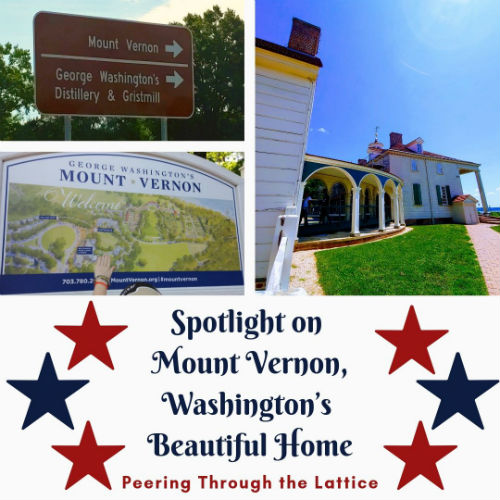
On Saturday morning, we piled into the minivan and set off on our adventure. The two-hour drive took us across the Potomac River to the neighboring state of Virginia.
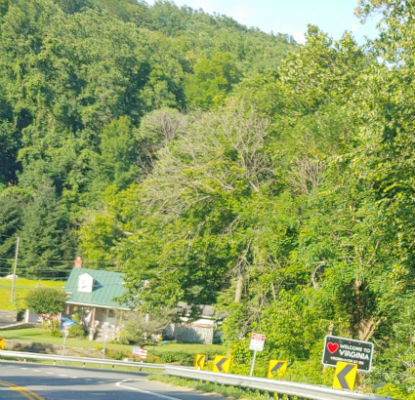
The Visitor’s Center
After parking outside the entrance, we made our way inside the Visitor’s Center. We lamented having to pay full price for our three girls. Since they were all over 12, tickets were $20 apiece.

We headed to the theater to see the orientation movie. On our way, we observed colorful stained glass windows depicting scenes from George Washington’s life.
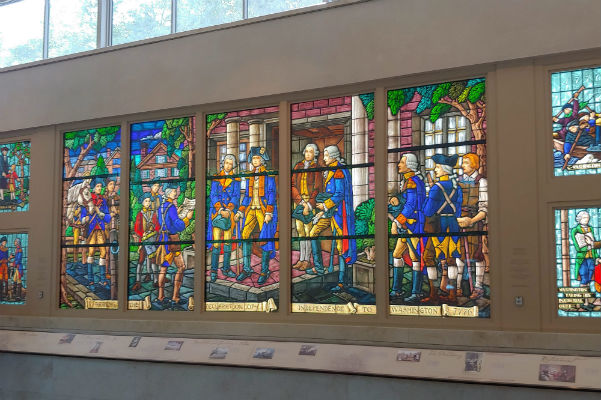
A scale model of the house caught our attention as well.
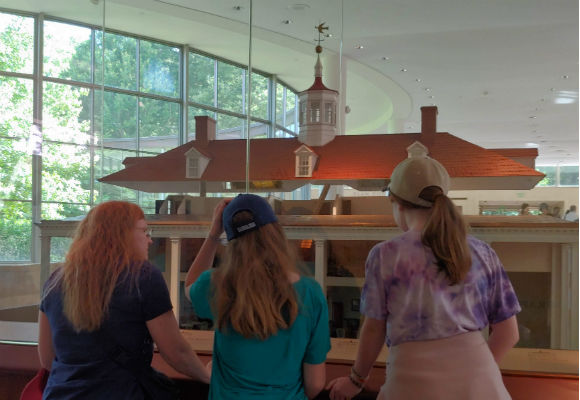
During our brief wait, I downloaded the Mount Vernon app so we could navigate the premises and choose features we’d like to see.

I was glad we paused to see the film. It highlighted features of Mount Vernon I didn’t know about. Aside from the house, there was a museum, garden, farm, and more. We could only hit the highlights on our short visit.
When the movie ended, we walked down the path to Washington’s home and joined the crowd waiting to tour it.
Touring the House

Scaffolding shrouded the front of the house, which was being refinished. The home would soon boast a new coat of crushed sandstone, restoring it to the original look.

Covered walkways connected the main house to the gardener’s quarters on the left and the kitchen on the right.

Since no photos were permitted inside, I pocketed my camera and observed the interior. A beautiful harpsichord greeted us in the first room. What would it be like to travel back in time to hear Martha or her daughter regale us with music? Paintings of landscapes and Washington’s family members peppered the walls.
The rest of the house held many bedrooms, which were ornately decorated. Each had its own color theme, and most featured canopy beds. In one room, the mattress was intentionally left crooked so visitors could see the ropes that held the frame together.
On the back porch, we paused to view the peaceful Potomac River. Nowadays, motorboats traverse the waters. In Washington’s time, there may have been rowboats or canoes.

Exiting the main house, we continued to the kitchen. Since it was a separate building, photography was allowed. I retrieved my camera for a snapshot of the fireplace where Washington’s food was prepared.

From there we peeked into the smokehouse. It looked like numerous hams were hanging from the ceiling to cure.
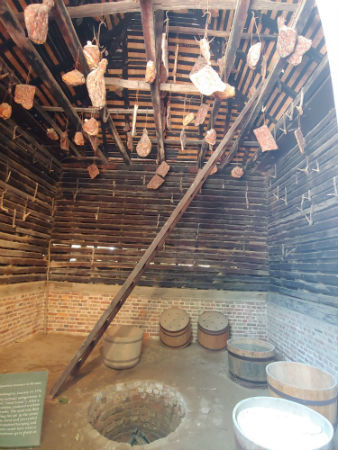
Exploring the Grounds
Next, we wandered into the kitchen garden. Interesting fruit trees caught our eyes. Apples, figs, and other varieties of fruit grew at chest height. The branches had been carefully trained to grow along the edges of the garden. Wooden beams supported long thick branches full of fruit. It was designed for easy picking—no ladders needed here!

On the other side of the path, colorful flowers cascaded over a white fence.

A variety of vegetables grew in the middle of the garden.

As noon approached, we paused to plan our next move. Should we stay and explore or leave for lunch? Food was available on the premises, but we knew it would be crowded. We decided to take a quick peek at the museum before heading homeward.
Inside the Museum
The museum led us on a journey through Washington’s life—from his youth through the fight for independence to his presidency and finally to his death.
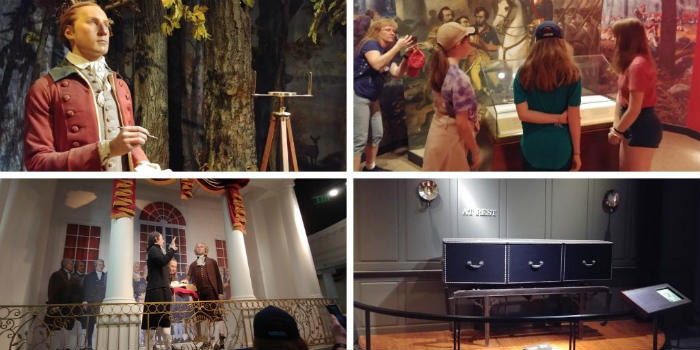
In the museum’s theater, we saw a 4-D movie depicting scenes from the American Revolution including the winter at Valley Forge. As we watched Washington crossing the Delaware River, flakes of snow descended on us.
Because we were becoming hungry and tired, we sped through much of the museum and almost missed an important artifact. We turned back just in time to see George Washington’s dentures, encased in plexiglass. They were made from a variety of materials including human and animal teeth as well as ivory.

Before leaving, we shopped for the requisite souvenirs—an ornament for our Christmas tree, a key chain for our oldest, and a deck of cards for our son. Walking back to the car, I reflected on our nation’s first president. Having explored his home, I had a more intimate knowledge of the man who led our country in the fight for freedom.
Did you know that his wife Martha, whose first husband had died, was one of the wealthiest ladies in Virginia when George married her? Or that Washington’s false teeth weren’t made of wood? I was certainly surprised to discover that Washington suffered from epiglottitis—a fatal infection of the flap that covers the windpipe to keep fluids out of the lungs.
Even though there was much we didn’t see on our short visit, our family had a great time exploring Mount Vernon. It gave us a fresh perspective on what life was like at the dawn of our country. George Washington’s home is a great destination for a homeschool field trip. Check it out on your next visit to the DC area.
Has your family visited Mount Vernon or any other Presidents’ homes? Please share your experience in the comments.